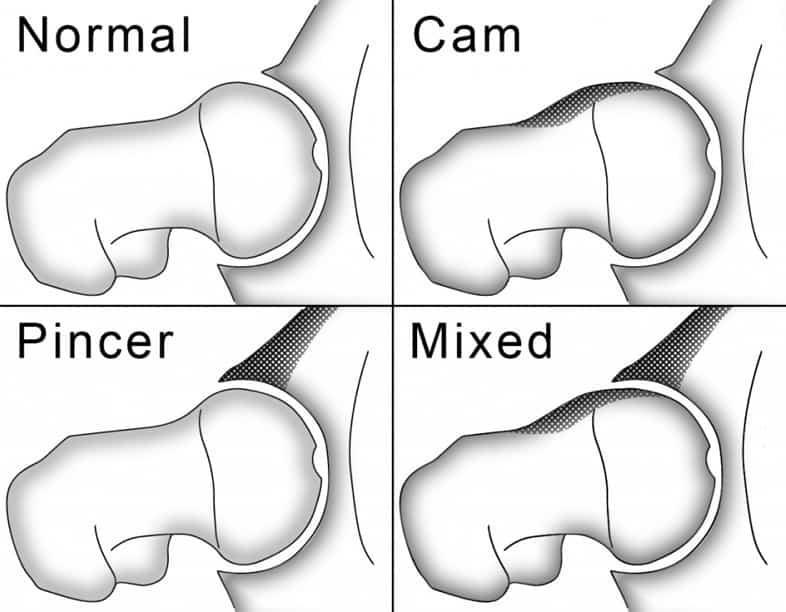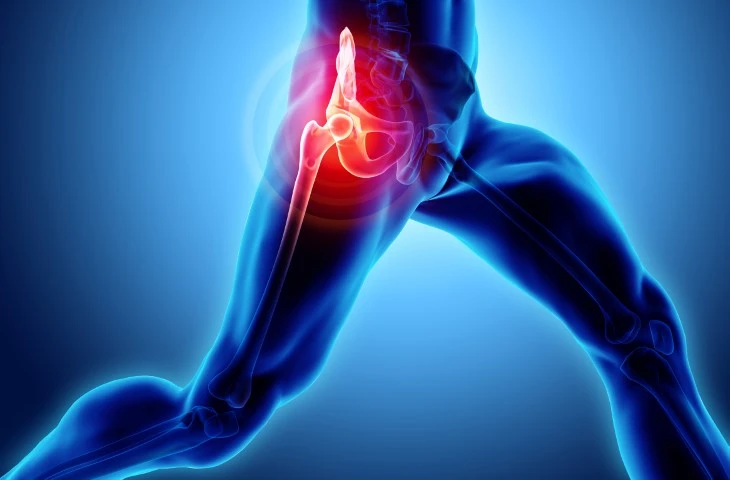Hip Impingement
Hip impingement, also known as femoroacetabular impingement (FAI), is a condition in which there is abnormal contact between the ball of the femur (thigh bone) and the acetabulum (hip socket). This can lead to pain, limited range of motion, and potential damage to the hip joint over time.

Types of Hip Impingement :
- Cam Impingement: In cam impingement, there is an abnormality in the shape of the femoral head (the “ball”) that doesn’t fit perfectly into the hip socket, causing friction and impingement during certain movements.
- Pincer Impingement: Pincer impingement occurs when there is excessive coverage of the femoral head by the acetabulum (the “socket”). This can lead to impingement as the two structures rub against each other.
- Combined Impingement: Some individuals may have a combination of both cam and pincer impingement, which can be referred to as combined impingement.
Factors Leading to Hip Impingement :
- Abnormal Hip Anatomy: Variations in hip joint shape or alignment can increase the risk of impingement.
- Repetitive Hip Movements: Activities that involve repetitive hip flexion or rotation, such as certain sports, may contribute to impingement.
- Age: Over time, age-related degeneration of the hip joint can contribute to impingement.

Symptoms and Indications For Hip Impingement :
Common signs of Hip Impingement may include:
- Hip pain, typically located in the groin area.
- Pain that worsens with certain activities, such as sitting for extended periods, walking, or running.
- Limited range of motion in the hip joint.
- Stiffness and discomfort during hip movements.
- The sensation of catching or clicking in the hip.
Diagnosis and Evaluation:
- A physical examination to assess hip joint range of motion and symptoms.
- Imaging studies, such as X-rays, CT scans, and MRI, to evaluate hip joint structure and identify anatomical abnormalities.
- Discussion with the patient to understand symptoms and their impact on daily life.
- Occasionally, diagnostic injections, such as a hip joint injection, to help confirm the source of pain and impingement.
- Treatment for hip impingement can range from conservative approaches like physical therapy and pain management to surgical interventions that address anatomical abnormalities.
